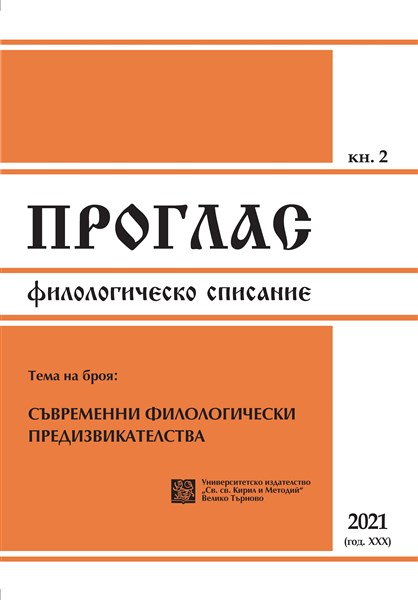Нови извори на живот: стихотворенията „Спиралите“,
„Лапис лазули“ и „Имитация от японски“ на Уилям Бътлър Йейтс
New sources of life: William Butler Yeats’s “The Gyres”, “Lapis Lazuli” and “Imitated From the Japanese”.
Author(s): Yarmila DaskalovaSubject(s): Language and Literature Studies, Studies of Literature, Theory of Literature, American Literature
Published by: Великотърновски университет „Св. св. Кирил и Методий”
Keywords: W. B. Yeats; gyres; lapis lazuli; Rocky Face; stylistic masks; rhetoric of sarcasm; dramatization of the speaking self
Summary/Abstract: The Irish poet William Butler Yeats was awarded the Nobel Prize for Literature in 1923 by the Royal Swedish Academy “for his always inspired poetry, which in a highly artistic form gives expression to the spirit of a whole nation”1. The article focuses specifically on three poems from Yeats’s “modernist” period which he included in the cycle New Poems (1938): “The Gyres”, “Lapis Lazuli” and “Imitated from the Japanese”. These later writings emerge as a logical consequence of his previous engagement with philosophy and occultism, mythology and history, art and reality. Yeats’s strenuous efforts to forge mythopoeic stereotypes seem to transcend mere personal versions of myth in an attempt to discover deeper levels of meaning, and to complete the self-image he developed throughout his life. In his later works he managed to make meaningful pronouncements on key moral and philosophical issues relating to the human condition.
Journal: Проглас
- Issue Year: 30/2021
- Issue No: 2
- Page Range: 147-158
- Page Count: 11
- Language: Bulgarian

